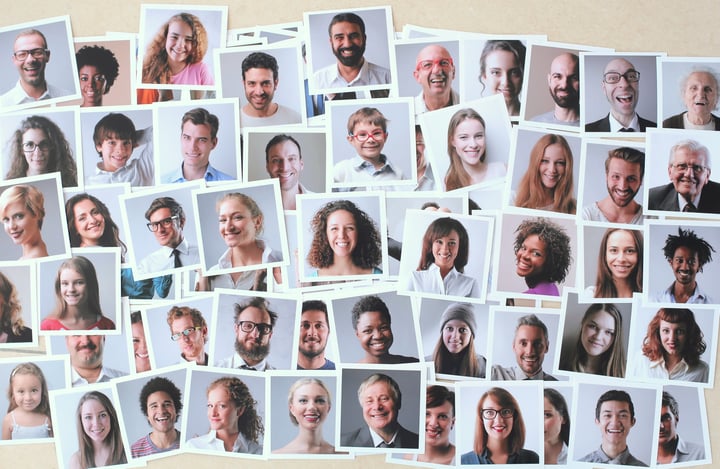Celebrate Asian Heritage Month: How to Be a Better Ally to Our Asian Colleagues
Why celebrate Asian Heritage Month?
This week, we begin celebrating Asian Heritage Month (AHM) in Canada. AHM is a great returning opportunity to learn more about the unique heritage, history, and impact of people of Asian descent.
Here are some fun facts about this celebration in Canada and the US:- This year also marks the 20th anniversary since the Canadian government officially declared May as Asian Heritage Month (read more about the Canadian history of AHM here).
- In the US, AHM is also celebrated in May but called the Asian/Pacific Heritage Month (APHM). This celebration originally began as a week-long observance in the late 1970s and was extended to a month-long celebration by Congress in 1990 (read more about this history here).
It’s important to remember the wide scope of heritages celebrated during AHM/APHM.
In Canada, AHM celebrates the contributions of people from East Asia, Southern Asia, Western, Central, and Southeast Asia, including all of their unique languages, ethnicities, cultures, and religious traditions. In the US, the broader term “Asian/Pacific” includes the Pacific islands of Melanesia, Micronesia, and Polynesia in addition to the Asian continent.
Acknowledging this wide range of heritages helps us to understand the diversity within Asian/Pacific groups and the scale of cultures and contributions we are recognizing in May.
AHM is also a timely reminder for organizations and its leaders to come together to fight against anti-Asian racism.
Especially in light of the recent rise of anti-Asian violence, it is an opportune time for organizational leaders to stand up as allies and show our support, united against discrimination of all forms against our colleagues.
So, this blog article covers why we, as colleagues and organizational leaders, should better support Asian employees today and explores 4 critical ways that we can begin this work of allyship.
Why should we better support our Asian colleagues?
- Rise of anti-Asian hate during the COVID-19 pandemic
Imagine experiencing increasing fear and discomfort on a daily basis to walk safely down the street without being harassed by a random stranger or having to worry about being treated differently at a store or waiting in line for an elevator, simply because of the way you look. This may have been the experience of several Asian colleagues in your team or organization over the last two years.
Since the early days of the pandemic, many communities across North America have been witnessing a disturbing rise in anti-Asian violence, including racial slurs, harassment, and physical assaults. Alarmingly, two years into the pandemic, these incidents of anti-Asian racism are still continuing on an upward trend rather than moving downward.
According to a recent report by the Chinese Canadian National Council Toronto Chapter (CCNCTO) and Project 1907, in 2021, there was a 47 percent increase in anti-Asian racism incidents from the previous year, with a total of 943 incidents reported across Canada.
In the US, Stop AAPI Hate, a national coalition documenting and challenging anti-Asian discrimination, has reported a total of 6,273 incidents in 2021, which has drastically increased from 4,632 incidents occurred in 2020.
This rise in violence and discrimination impact Asian individuals’ experiences both within the organization and in their personal lives.
For example, Asian employees may be negatively affected by the increasing news about threats of violence, and this toll on their mental health harm their abilities to do their jobs. They may even experience discrimination and feel discomfort within the workplace, while not having the space to talk about these challenges. Asian parents may have felt discouraged to send their children back to school for in-person learning in recent years, which could have impacted their childcare responsibilities and stresses at home.
- Persisting racial stereotypes and bias
It’s also important to note that racism and discrimination against people of Asian heritage didn’t just begin with the pandemic. Negative stereotypes and bias against Asian individuals have persisted for decades such as that Asians are “foreign,” “smart,” “quiet,” “docile,” “nerdy,” or the “model minority.”
The unchecked persistence of these stereotypes in a workplace can harm Asian employees’ sense of confidence and belonging in the organization, their ability to bring their full selves to work, and unfairly influence their likelihood of getting jobs or promotions.
The biases against Asian employees can also add disproportionate pressure on their performance and discourage them from speaking up in meetings or competing for management-level positions (ex. due to the stereotype of Asians being perceived as “quiet” or “docile”).
Read more about the impact of stereotypes and bias on Asian employees here.
How can we then support our Asian colleagues as allies?
- We can begin by learning and encouraging others to educate themselves.
Individually, we can start by developing our knowledge of the history, culture, and contributions of Asian peoples within our communities as well as the challenges of racism and discrimination that have surrounded them (a great example is our recent article about name-based discrimination affecting Asian employees).
AHM/APHM is an opportune time to engage in this learning as many educational resources - such as this one provided by the Government of Canada - are available online and circulating throughout the month!
As organizational leaders, actively provide training and resources to support your employees’ collective learning on topics such as DEI, anti-racism, and/or allyship. Make it a culture to share accessible resources and to grow each other’s learning throughout the organization.
The Humphrey Group (THG)’s recent blog articles about DEI and our program offerings are a great way to get started in this step.
- We can listen to understand and create more intentional spaces to listen.
There is no better way to clarify how we can be better allies to our Asian colleagues than by listening to their perspectives and experiences. Ask open-ended questions to begin a dialogue such as “How are you feeling?” “How can I be of support?” or “What can I do to be a better ally?”
In doing this, ensure to create a safe and supportive space for your colleagues. Begin with empathy and humility when listening to recognize that these conversations may be emotionally taxing for any colleagues experiencing trauma from episodes of discrimination and that their experiences are real and valid - even if they are different from our own.
In other words, listen with the goal to better understand their perspectives by centering their experiences first.
- We can acknowledge our biases and raise our awareness.
We may be unaware of our own biases impacting what we say and do in our relationships with our Asian colleagues at work. For example, a common microaggression facing Asians is the question, “Where are you from originally?” This question assumes that Asian individuals are not from or don’t belong to the place that they work and reside in and attempts to highlight their supposed “foreignness”.
Reflect on your own assumptions and unconscious biases and acknowledge that they exist. You may be well-intentioned but still have biases that cause a negative impact. This initial acknowledgement is a crucial step to confronting our biases. Read more about unconscious biases and how to mitigate them in our recent articles.
Then, think about where biases affecting Asian employees may shape unfair barriers in your organization. If you are an organizational leader, work to address these barriers and to increase your employees’ awareness of their biases - especially people managers in charge of making decisions about hiring policies and promotions.
- We can speak up as an ally.
Finally, speaking up in the right way is an important prerequisite for allyship.
Speak up for your Asian colleagues (rather than remaining silent) when you witness discrimination, barriers, or biases against them at work. Communicate to empower your Asian colleagues.
Remember that allyship is rooted in DOING rather than being. In other words, to BE an ally means that we must DO the work that allows us to be recognized as allies by the colleagues we are striving to be allies for.
Communicating as an ally is an accessible way of doing this work of allyship on a daily basis no matter who we are or what positions we hold in an organization.
That’s it for this week’s post on how to be a better ally to our Asian colleagues. If you found this article helpful, explore the full range of THG’s Diversity, Equity, and Inclusion Training solutions here!
Related Posts
Addressing Bias (Pt 2) : 5 Ways to Take Meaningful DEI Action
Unconscious bias affects us all, sometimes despite our best intentions.
Read More“What’s in a Name?” Part 2: How to Make Names Count for Inclusion in the Workplace
Inclusion in the workplace
Read More“What’s in a Name?” Part 1: Why Names Matter for Inclusion in the Workplace
Inclusion in the workplace
Read More.jpg?length=720&name=Audience%20applauds%20speaker%20shutterstock_1758289778%20(1).jpg)

